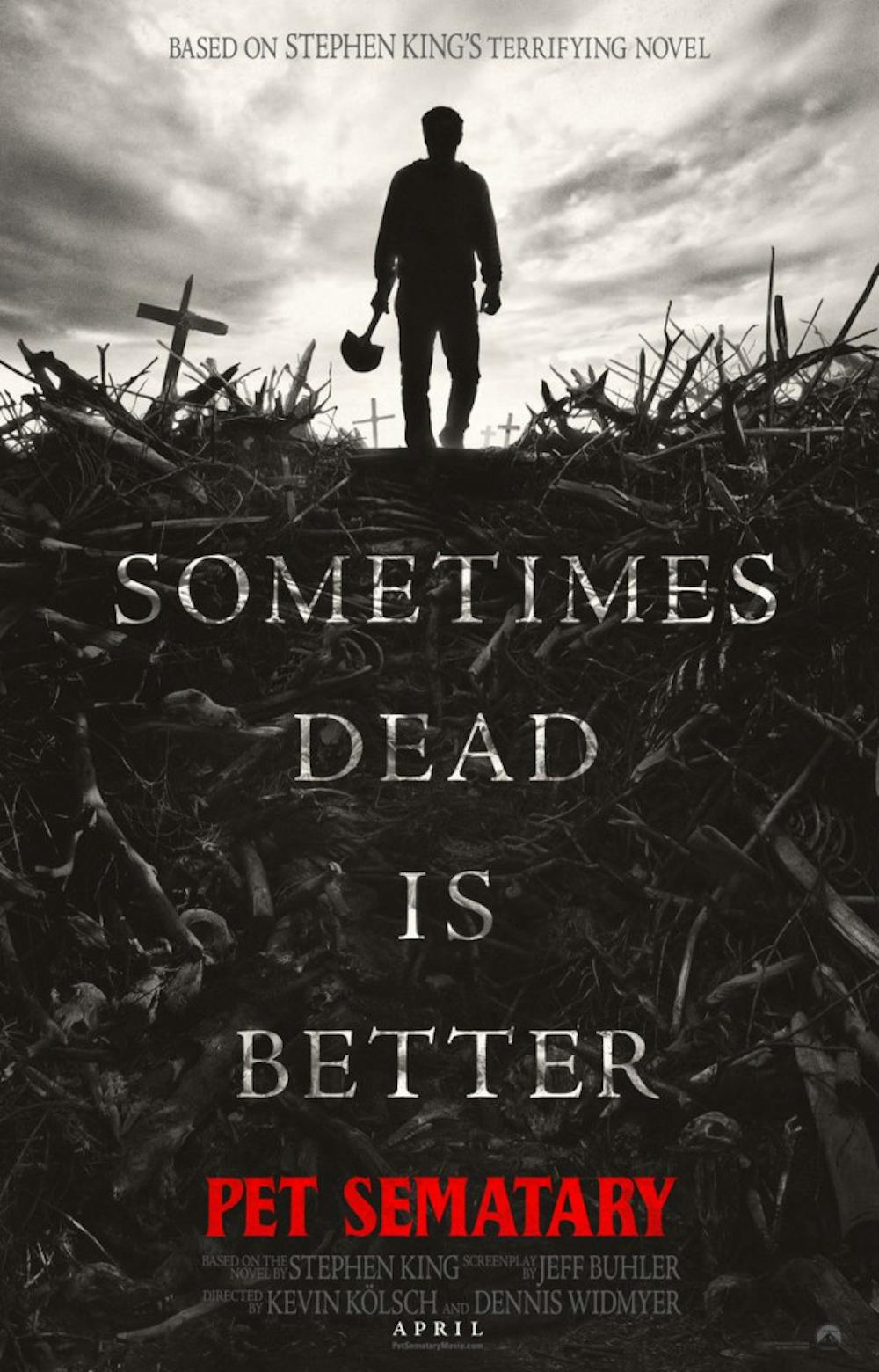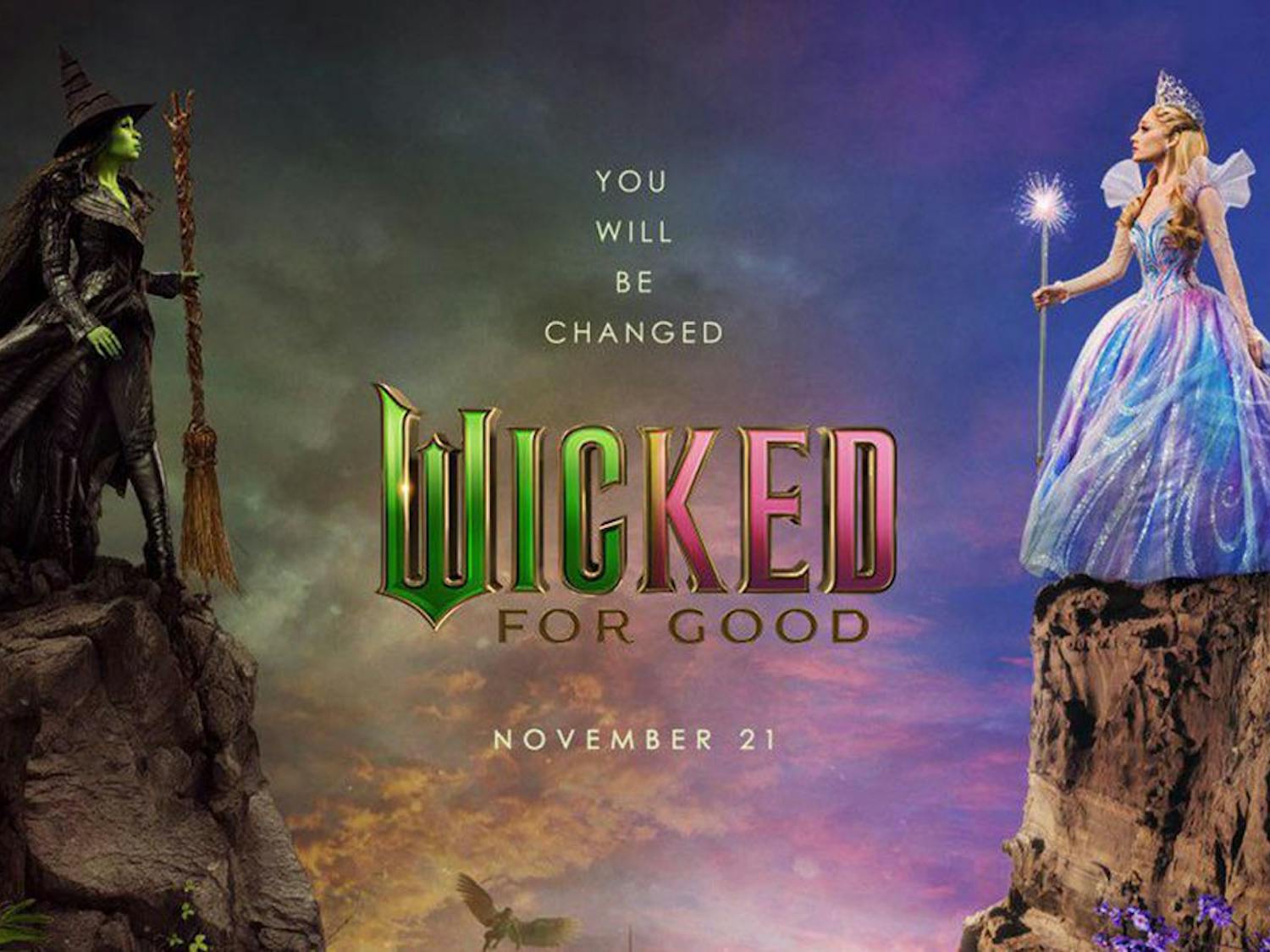Warning: this review contains spoilers.
If the 1920’s were the Golden Age of Hollywood, we are currently living through the Rusted Age of Hollywood. Unnecessary reboots, lazy rewrites of classics and painful to watch rehashings of the same old storylines has made going to the movies seemingly pointless over the past few years.
Following the “Pet Sematary” logic that “sometimes, dead is better,” sometimes, “no movie” is better than a reboot.
However, the 2019 update of Stephen King’s “Pet Sematary” breaks the reboot curse. While it stayed true to the original film in many regards, there were a few major changes that worked to create a film far more haunting than the original.
Just like in the original, the beginning of the film sees Dr. Louis Creed moving his family: his wife, Rachel, 8-year old Ellie and their toddler son Gage, from Boston to a rural Maine town. Hoping to spend more time with his young family, Louis makes the shift from an ER doctor to working to a college clinic. Immediately after getting to their new home, Ellie discovers the Pet Sematary, which is hallowed ground for local children who lost their beloved pets. It is here that Ellie meets their neighbor, Jud Crandall, who befriends the young girl and her family.
John Lithgow is brilliant - as usual - as Jud. Moreso in this remake than the original, the relationship between Jud and Ellie seems much more like a grandfather-granddaughter relationship. Jud, as well as Louis, are open to discussing the realities of life and death with the young girl. Jud, a widower, briefly describes his late wife to Ellie, explaining that she died after an illness. Louis explains the cemetery behind their house and what death means one night before bed. Rachel, however, haunted by the memories of watching her older sister, Zelda, die when she was a child, refuses to discuss the topic with her children.
At this point in the film, audiences are given much more backstory into Rachel and Zelda’s relationship than they ever got in the 1989 film. While Zelda was sick with spinal meningitis, audiences learn that Rachel, who was terrified of her older sister due to her deformities, accidentally caused her death when she was left alone to care for Zelda.
When Jud and Louis find Ellie’s cat, Church, dead on the side of the road, Rachel makes Louis promise to tell Ellie that he simply ran away, thus avoiding a conversation about death. Jud, on the other hand, is torn. Does he tell Louis the dark secrets of the Pet Sematary and preserve Ellie’s innocence, or does he keep quiet and keep the family safe from the evils that haunt the ground?
Of course, Jud chooses the former, and the cat ultimately comes back, but he wasn’t the same. After Church attacks both children, Louis drives him to a wooded area and leaves him, and things momentarily go back to normal. That is, until the cat comes back during Ellie’s ninth birthday party.
It is at this point in the movie that the biggest difference between the original and the reboot comes into play. Seeing their beloved cat in the middle of the road, both Ellie and Gage run to greet him, at the same time a truck is speeding down the road, the driver distracted by a cell phone. Louis is able to grab his young son, but the truck derails and kills their young daughter. Distraught with grief, Rachel and Gage go to her parent’s house, while Louis digs up his daughter’s grave to bury her in the Pet Sematary.
This change, this decision to kill off the young girl as opposed to the toddler, changed the film from scary to deeply, deeply disturbing.
https://www.youtube.com/watch?v=XakmsXltPkA
In the 1989 film, Miko Hughes, who played Gage, was roughly 3-years-old. That being said, he was unable to deliver many lines. While the concept of a dead child coming back to life and attacking his family is always disturbing, having an older actor take on the role creates the possibility for it to be terrifying, as opposed to just creepy.
And Jete Laurence, the young actress who played Ellie, was absolutely phenomenal at being terrifying. From her glares to her deeply haunting monotone, Laurence transformed Ellie from a sweet, soft-spoken girl to a menacing shell of who she used to be.
What’s most striking about this reboot is that it is far more depressing than the original. Both films deal with the same, heavy theme; the death of a child, but the loss of innocence is portrayed far more in the reboot. It is no longer a toddler silently wielding a knife, it’s an adolescent girl taunting her victims--her family and her first best friend in a new town.
By the end of the film, which is also very different from the original movie, audiences can sympathize with Louis Creed. If you had the power to bring back your loved ones, even if it changed them drastically, would you? Or would you heed Jud’s advice; “sometimes, dead is better?”
While many reboots of classic films are a chore to get through, “Pet Sematary” is proof that there are some stories worth revisiting.
Film Review: Pet Sematary

Heads up! This article was imported from a previous version of The Campus Citizen. If you notice any issues, please let us know.




